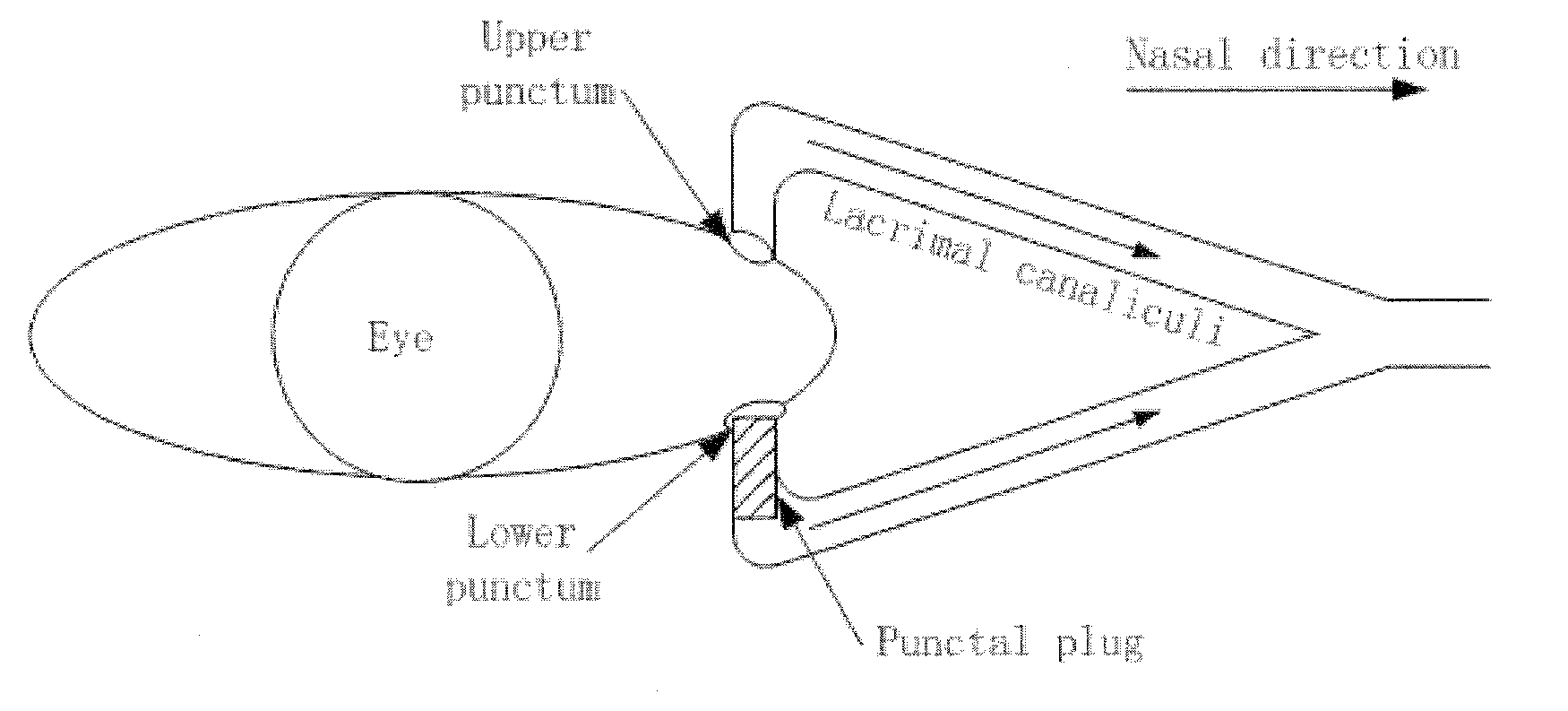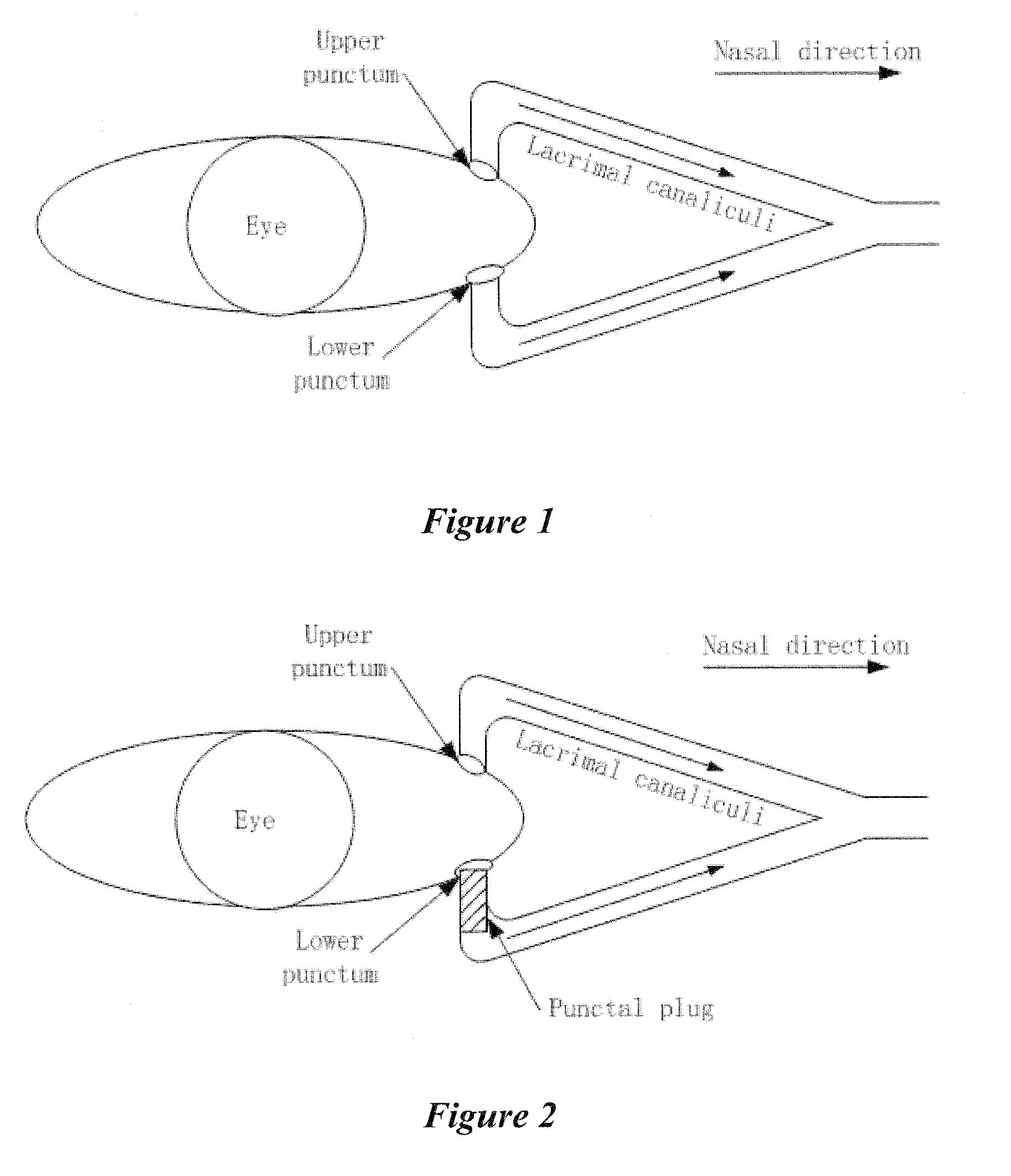Dry eye treatment by puncta plugs
a puncta plug and eye treatment technology, applied in the field of puncta plugs, can solve the problems of reducing production, reducing the effect of lubrication loss, and more serious problems, and achieve the effect of increasing the drug delivery rate and effective impermeability
- Summary
- Abstract
- Description
- Claims
- Application Information
AI Technical Summary
Benefits of technology
Problems solved by technology
Method used
Image
Examples
examples
Materials and Methods
[0063]Hydroxyl ethylmethacrylate (HEMA), ethylene glycol dimethacrylate (EGDMA), and Azobisisobutylonitrile (AIBN) were purchased from Sigma-Aldrich (St. Louis, Mo.); Cyclosporine A was purchased from LC Labs (Woburn, Mass.); and Silastic® laboratory tubing of three different sizes (ID 0.76 mm, 1.02 mm, and 1.47 mm) was purchased from Dow Corning (Midland, Mich.). The Dulbecco's phosphate buffered saline (PBS) used in the drug release experiments was purchased from Sigma-Aldrich (St Louis, Mo.).
Composition, Construction and Drug Release of Punctal Plugs
[0064]Puncta plugs, as shown in FIG. 3, with only a fraction of the plug length covered with an impermeable shell were prepared. The diameter of the shell was 0.93 mm to ensure a snug fit into the canaliculus and the diameter of the core was 0.51 mm The core of the plug was composed of HEMA and the partial-shell was composed of silicon. The release rate from the plug was varied by varying the cross-linking of the ...
PUM
| Property | Measurement | Unit |
|---|---|---|
| Length | aaaaa | aaaaa |
| Length | aaaaa | aaaaa |
| Mass flow rate | aaaaa | aaaaa |
Abstract
Description
Claims
Application Information
 Login to View More
Login to View More - R&D
- Intellectual Property
- Life Sciences
- Materials
- Tech Scout
- Unparalleled Data Quality
- Higher Quality Content
- 60% Fewer Hallucinations
Browse by: Latest US Patents, China's latest patents, Technical Efficacy Thesaurus, Application Domain, Technology Topic, Popular Technical Reports.
© 2025 PatSnap. All rights reserved.Legal|Privacy policy|Modern Slavery Act Transparency Statement|Sitemap|About US| Contact US: help@patsnap.com



